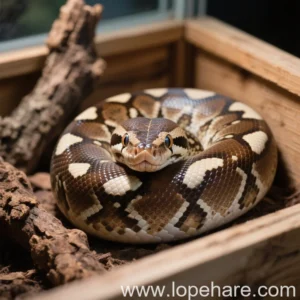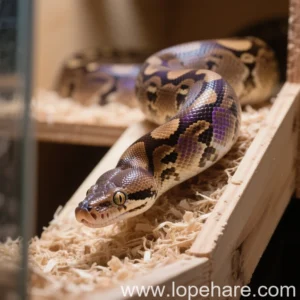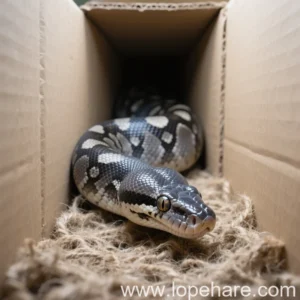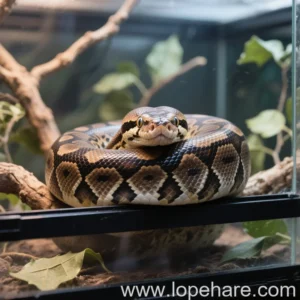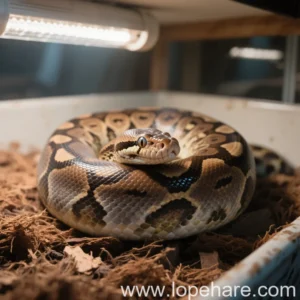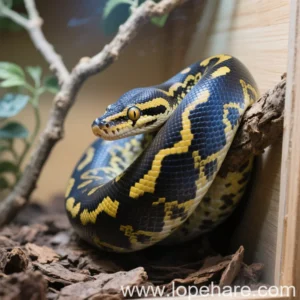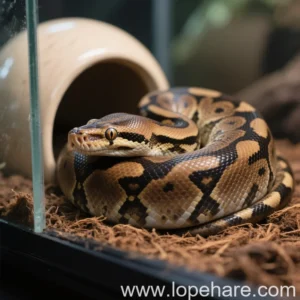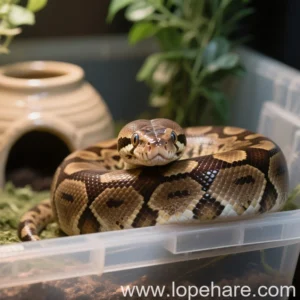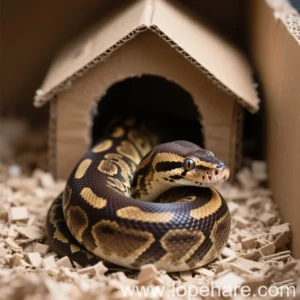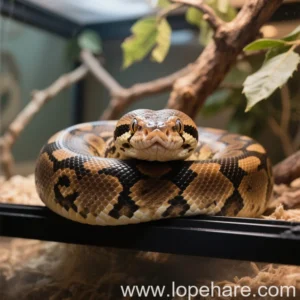Ball Python Temperature and Humidity Control: How to Avoid Common Mistakes
Welcome to lopehare.com! As specialists in niche pet care, we often guide enthusiasts on the specific needs of unique animals. Ball pythons (Python regius), while often recommended for beginner snake keepers, have precise environmental requirements that, if not met, can lead to significant health issues. Among the most critical factors are temperature and humidity. Getting these right is the foundation of successful ball python husbandry. Let’s explore the optimal ball python temperature and humidity gradient and how to avoid common errors.
The Critical Role of Temperature and Humidity
Ball pythons are native to West and Central Africa, inhabiting grasslands and woodlands (source). Their natural environment provides specific temperature ranges and significant humidity, which they rely on for crucial biological processes like digestion, metabolism, and shedding. In captivity, recreating these conditions is non-negotiable. Incorrect temperature or humidity can stress the snake’s immune system, leading to poor appetite, digestive issues, and susceptibility to infections.
Setting Up the Correct Temperature Gradient
Snakes are ectothermic, meaning they rely on external sources for heat. A proper enclosure must offer a temperature gradient, allowing the ball python to regulate its body temperature by moving between warmer and cooler areas.
Basking Spot (Warm Side)
The warmest area, often referred to as the basking or warm spot, should typically range from 88-92°F (31-33°C). This is where the snake goes to digest its food. Heat sources should be regulated by a thermostat to prevent overheating, which can be fatal. Common heat sources include:
- Under Tank Heaters (UTHs) controlled by a thermostat are popular for creating belly heat, essential for digestion.
- Ceramic Heat Emitters (CHEs) or Deep Heat Projectors (DHPs) on a thermostat can provide ambient heat and a warm spot from above, mimicking natural radiation. These should be guarded to prevent burns.
Avoid heat rocks, which can cause severe burns due to unregulated surface temperatures.
Ambient Temperatures
The cooler side of the enclosure should maintain an ambient temperature between 75-80°F (24-27°C). This allows the snake to cool down when needed. Ensure the entire enclosure doesn’t become uniformly hot.
Nighttime Temperatures
A slight drop in temperature at night is acceptable and can even be beneficial, mimicking natural cycles. Temperatures on the cool side can drop to around 72-75°F (22-24°C), while the warm spot should ideally not drop below 80-82°F (27-28°C). Significant drops can lead to digestive problems.
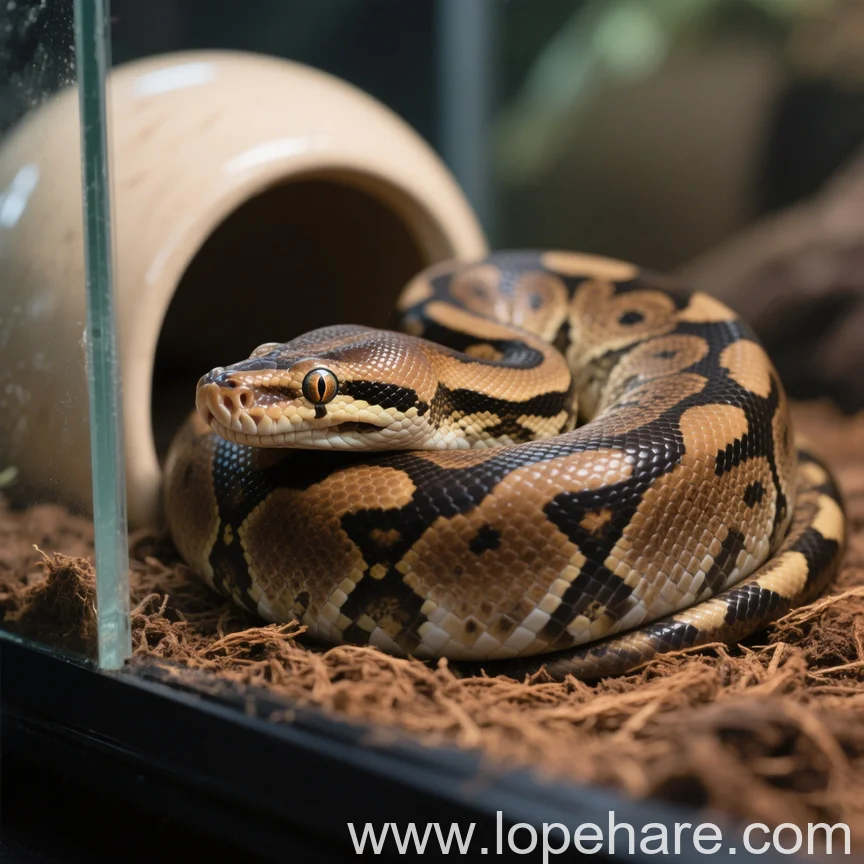
Mastering Humidity Levels
Humidity is equally vital. Ball pythons require a humidity level of 55-65% consistently, with increases (70-80%) necessary during shedding cycles.
Achieving and maintaining these levels can be challenging, but crucial for preventing issues like respiratory infections and incomplete sheds (dysecdysis).
Methods to increase humidity:
- Appropriate Substrate: Substrates like cypress mulch, coconut fiber (Eco Earth), or sphagnum moss retain moisture well. Avoid dry substrates like aspen bedding, which molds easily when wet and offers poor humidity control.
- Large Water Dish: A large, sturdy water bowl placed on the warm side can help increase ambient humidity through evaporation.
- Misting: Daily misting of the enclosure walls and substrate can temporarily boost humidity. Be careful not to make the substrate waterlogged, as this can lead to scale rot.
- Humidity Box/Hide: A hide box filled with damp sphagnum moss is invaluable, especially during shedding. This provides a high-humidity microclimate for the snake.
- Enclosure Type: Tubs or PVC enclosures typically retain humidity better than screen-top glass tanks, though glass tanks can be modified (e.g., covering part of the screen top).

Humidity and Shedding
One of the most common problems related to low humidity is poor shedding. A snake struggling to shed its skin indicates the air is too dry. Providing a humid hide throughout the year is a proactive way to support healthy shedding. When you notice the snake’s eyes turning cloudy or its skin dulling (the “blue” phase), increase enclosure humidity slightly and ensure the humid hide is moist.
Understanding and providing the correct humidity for ball python shedding is a mark of a responsible keeper.
Common Mistakes and How to Avoid Them
Deadly Combinations: The most dangerous errors involve high temperatures combined with high humidity, which can lead to fatal respiratory infections, or low humidity combined with low temperatures, stressing the snake and hindering digestion.
Other common mistakes include:
- Guessing Temperatures: Relying on stick-on thermometers is unreliable. Use digital thermometers with probes placed at the warm spot, cool side, and ambient areas.
- Guessing Humidity: Analog hygrometers are often inaccurate. Invest in a digital hygrometer placed in the middle of the enclosure.
- Lack of Thermostat: Running heat sources without a thermostat is incredibly dangerous and can lead to severe burns or death from overheating. Always use a reliable thermostat.
- Waterlogged Substrate: While humidity is key, soaking the substrate leads to bacterial growth and scale rot. Substrate should be damp, not wet. Allow it to dry slightly between mistings if needed.
- Poor Ventilation: In enclosures designed for humidity, ensuring adequate ventilation is still crucial to prevent stagnant air. Screen lids partially covered are often sufficient, or ensure vent holes in tubs/PVC enclosures aren’t blocked.
Essential Monitoring Tools
You cannot manage what you don’t measure. Essential tools for monitoring your ball python’s environment include:
- Digital Thermometers: With multiple probes to measure the gradient accurately.
- Digital Hygrometer: For accurate humidity readings.
- Thermostat: Essential for regulating all heat sources and preventing dangerous temperature spikes.
- Infrared Thermometer Gun: Useful for quickly checking surface temperatures of hides, basking spots, etc.
Regularly check these tools to ensure they are functioning correctly and the readings are within the target ranges.

Conclusion: Consistency is Key
Mastering ball python temperature and humidity control requires attention to detail and reliable equipment, but it is absolutely achievable. By understanding the needs of your Python regius and avoiding common mistakes, you can preventing ball python respiratory infections from incorrect humidity and other husbandry-related illnesses. At lopehare.com, we believe proactive, informed care is the best path to a happy, healthy pet. Consistent monitoring and adjustment of your enclosure parameters will provide your ball python with the stable, appropriate environment it needs to thrive for many years.
Citation:
Wikipedia. (n.d.). Ball python. In Wikipedia, The Free Encyclopedia. Retrieved from https://en.wikipedia.org/wiki/Ball_python
